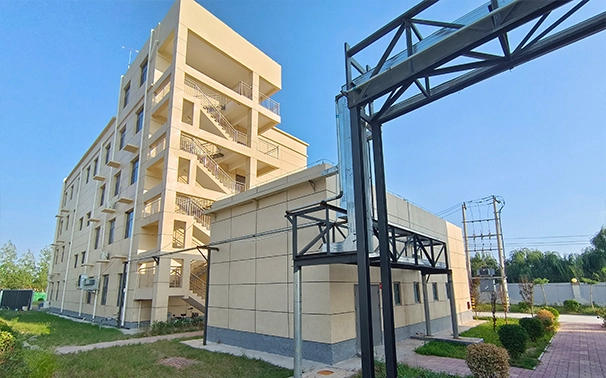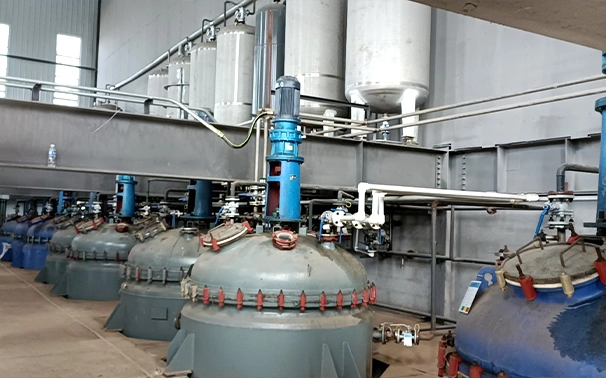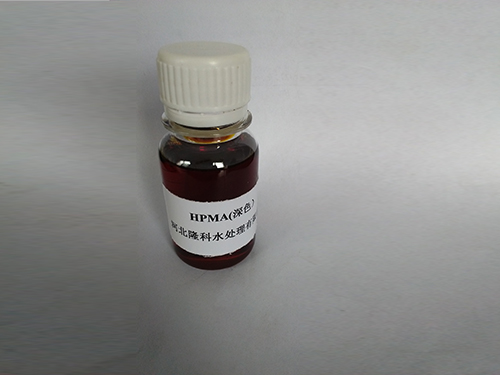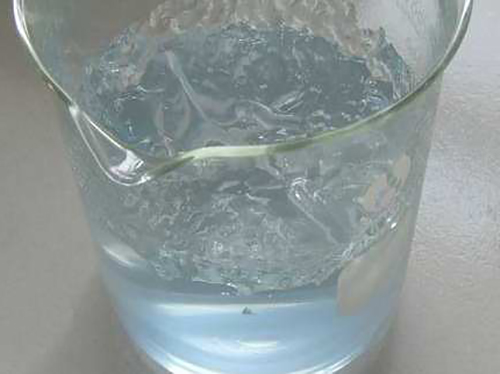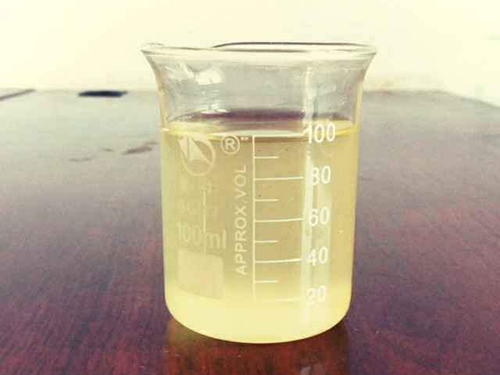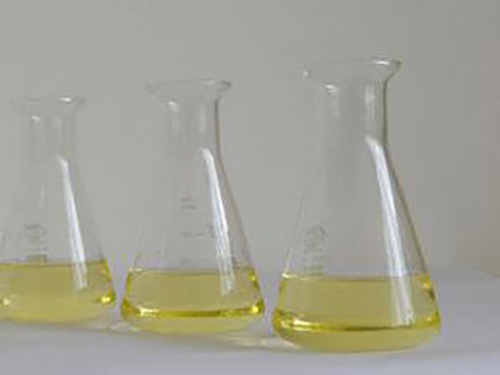Polycarboxylic Antiscalant and Dispersant, Products
Our polymeric dispersant products—such as Hydrolyzed Polymaleic Anhydride (HPMA) and Acrylic Acid-2-Acrylamido-2-Methylpropane Sulfonic Acid Copolymer (AA/AMPS)—are top choices across diverse industries that rely on water treatment and pigment handling technologies. In the aspects of textile dyeing and printing, as a leading dispersing agent in textile operations, our dispersant for sale products prevent dye aggregation, ensure even color distribution, and improve wash-fastness. Apparel manufacturers needing dispersant agents to reduce uneven dyeing and enhance fabric quality will find our dispersing agents offerings essential. In the aspects of paints and coatings, acting as effective wetting and dispersing agents for paints, they help pigments and fillers disperse uniformly, preventing clumping or sedimentation. Paint formulators and dispersant suppliers working on high-performance coatings gain longer shelf life and improved color consistency. In industrial cooling systems such as boilers, steam generators, and cooling towers, product variants like carboxylate polymer and terpolymer function as scale inhibitors, keeping calcium carbonate, phosphate, and sulfate salts suspended rather than forming deposits. Water treatment engineers will appreciate the dual-purpose capability as a corrosion-scale inhibitor. In the general water treatment like municipal and wastewater applications, these dispersants prevent fouling in filtration systems, enhance solids suspension, and simplify sludge handling. Integrators seeking robust dispersing agents uses in clarification systems can reduce downtime and maintenance costs.
-
CAS No. 26099-09-2
-
CAS No. 40623-75-4
-
LK-1100 is a partially neutralized salt of low molecular weight polyacrylic acid (PAA) homopolymer. LK-1100 can separate the microcrystals or sediment of calcium carbonate, calcium sulfate and other salts into the water without settling
-
Carboxylic acid-sulfonate copolymer LK-2000 is an acrylic acid-sulfonate copolymer. It is a high-efficiency scale inhibitor and dispersant. It can effectively remove calcium phosphate scale, calcium carbonate scale and other scale-forming salts in water. Inorganic minerals have good dispersion effect.
-
LK-3100 is an excellent scale inhibitor and dispersant in all cooling water treatments . LK-3100 has a good inhibitory effect on dry oxidation and hydrated iron oxide. LK-3100 is also an excellent dispersant used in all-organic cooling water systems.
-
Properties:
How Does Our Biodegradable Copolymer Compare to Other Dispersant Manufacturers?
When evaluating dispersant manufacturers, industrial buyers increasingly prioritize sustainability, performance, and multifunctionality. Longke meets all three with our standout product, the biodegradable copolymer LK-5000, a highly effective carboxylate-sulfonate copolymer designed for real-world industrial applications. Unlike many competitors that focus on single-function dispersants—typically dispersing agent for pigments, dye, or paint industries—LK-5000 delivers dual-action benefits as both a dispersing agent and a high-performance scale inhibitor, offering far more than standard dispersant agent solutions.
What truly sets LK-5000 apart in the market of dispersant suppliers is its ability to address the needs of complex systems like cooling towers and boiler operations. This advanced copolymer tackles stubborn deposits including silica and magnesium silicate, which are notoriously difficult to manage. In addition, it effectively prevents phosphate-based fouling, such as dry or hydrated ferric oxide buildup—a common culprit behind heat exchanger inefficiency and premature equipment failure.
From an operational standpoint, our dispersant for sale streamlines industrial water treatment in two major ways. First, its superior dispersant capabilities ensure that pigments, dyes, and suspended solids remain evenly distributed in liquid systems, reducing the risk of clogging and sedimentation. This translates directly into less downtime, easier cleanup, and longer maintenance intervals—factors any operations manager will appreciate. Second, its proven scale inhibition properties protect metal surfaces from corrosion and mineral buildup, particularly in environments that rely on hard water. That’s crucial in power plants, petrochemical refineries, and textile processing, where scaling and fouling can bring production to a halt.
Another reason industrial users prefer Longke over other dispersant manufacturers is our dedication to efficiency and support. Our dispersant for sale helps companies consolidate their chemical use—offering coagulation-dispersal balance in a single formulation. This reduces the number of treatment chemicals required, simplifies dosing, and cuts storage and handling costs. Furthermore, our in-house analysis lab and dynamic simulation testing rooms provide clients with custom application support. Whether you're troubleshooting a legacy cooling system or designing a new high-efficiency water circuit, our technical team helps adapt dispersant agent to meet your specific performance goals. In short, when comparing biodegradable copolymers across the market, LK-5000 not only performs at the top of its class—it simplifies processes, saves costs, and supports long-term sustainability.
How Does a Dispersing Agent Work?
Dispersing agents—often referred to as dispersant agents—are unsung heroes in many industrial processes. But how does a dispersing agent work, exactly? In the simplest terms, a dispersing agent helps to separate and stabilize solid particles within a liquid medium, preventing them from clumping together or settling over time. This seemingly small function plays a critical role in improving product uniformity, efficiency, and shelf life across countless applications.
Take, for example, the role of polymeric dispersants. These high-performance molecules are engineered to surround individual solid particles—whether pigments, minerals, or drugs—and create a repelling force between them. By doing so, they prevent aggregation and keep the particles evenly distributed within the liquid. This action is especially vital in systems like coatings, paints, ceramics, and even pharmaceutical formulations, where consistency and precision are non-negotiable. In pharmaceutical applications, a dispersing agent in pharmaceutical formulations ensures that active ingredients are evenly dispersed in a suspension, enhancing drug bioavailability and stability. Without the right dispersant, tablets might not dissolve properly or dosage may vary—something no patient or manufacturer can afford.
If you're searching for a reliable dispersant for sale, you need more than just a basic product—you need assurance of quality and consistency. That’s where sourcing from a reputable dispersant factory like ours becomes crucial. We offer a full range of polymeric dispersants tailored to your exact industry needs, developed through rigorous testing and high-end formulation technologies. Whether you operate in agriculture, pharmaceuticals, coatings, or construction, our dispersing agents are designed to perform under the most demanding conditions. Beyond technical performance, our dispersants also contribute to environmental sustainability. By improving material dispersion, less raw material is needed to achieve the same result, reducing waste and increasing cost-efficiency. In water-based systems, they also lower the need for harsh solvents or mechanical agitation, making them ideal for eco-conscious manufacturers. Dispersing agents are indispensable tools for modern production, ensuring product stability, quality, and performance. So, if you're looking for a dispersant for sale that delivers both high quality and value, explore our trusted dispersant factory offerings. Let us help you unlock the full potential of dispersion technology—because better dispersion means better results.
How is Polycarboxylate Dispersant Used as A Dispersing Agent in Textile Dyeing Processes?
In today’s textile dyeing industry, consistency, precision, and sustainability are at the heart of production excellence. One of the most significant challenges in dyeing—especially with reactive and disperse dyes on polyester or cotton blends—is achieving uniform coloration without streaking, blotching, or patchy results. This is where the polycarboxylate dispersant steps in as a critical enabler of modern textile quality. As a high-performance dispersing agent, the polycarboxylate copolymer functions by ensuring that dye particles remain finely and evenly distributed in the dye bath. Rather than allowing dye molecules to clump or aggregate, the dispersant keeps them suspended in the liquor at a microscopic level. This uniform suspension is vital for delivering sharp, clear, and vibrant color penetration across every inch of fabric. Smoother tones, greater depth of shade, and minimal variation—even on large production batches.
At the molecular level, the polycarboxylate dispersant adsorbs onto the surface of dye molecules, introducing steric hindrance that physically blocks them from clustering. This not only stabilizes the dispersion but also boosts the exhaustion rate—meaning more dye transfers from the bath into the fiber. Textile mills report tangible gains from this effect: increased color strength, better wash-fastness, and a significant drop in unused dye waste. In practice, many manufacturers see up to a 15% decrease in dye consumption and a 20% reduction in costly re-dyeing efforts. Crucially, the polycarboxylate dispersant is designed to perform under the harsh conditions common in dyeing—namely high temperatures and alkaline pH levels. It is fully compatible with typical dyeing auxiliaries and does not compromise fabric integrity. Moreover, the formulation is biodegradable, non-yellowing, and safe for all fiber types, making it ideal for mills focused on eco-conscious operations.
Textile facilities that incorporate this dispersing agent into their processes often experience improved reproducibility, reduced effluent load, and streamlined production. Beyond quality, the environmental and economic benefits—from lower chemical use to easier wastewater treatment—make polycarboxylate dispersants not just a technical upgrade, but a strategic choice for sustainable dyeing.
What Is the Purpose of the Dispersant in an Oil Spill?
In the event of an oil spill, time is of the essence—and this is where a dispersing agent plays a crucial role. The primary purpose of a dispersant is to break down oil slicks into smaller droplets, allowing them to mix with water more easily and accelerating their natural biodegradation. Rather than letting thick oil float on the surface and damage marine ecosystems, dispersants help integrate the oil into the water column, making it more accessible for natural microbial breakdown.
But what makes a high-quality dispersant truly effective? Modern polymeric dispersants, especially those based on polycarboxylate dispersant technology, are engineered for maximum efficiency and environmental safety. These copolymer-based solutions exhibit excellent surface activity, allowing them to reduce the interfacial tension between oil and water. As a result, they not only help disperse crude oil in oceanic environments but also find extended application across multiple industries. In fact, the dispersing agent uses go far beyond oil spill response. In textiles, dispersing agents in textile manufacturing help stabilize dye particles in water-based dyeing systems, ensuring uniform color application and preventing clumping. In industrial processing, polymeric and copolymer dispersants improve the dispersion of solids in paints, coatings, and ceramic slurries, offering smoother finishes and consistent product quality.
Longke, a trusted dispersant manufacturer, provides advanced dispersants that align with evolving environmental regulations and industrial standards. Our dispersant for sale portfolio includes water-soluble, biodegradable formulations ideal not just for marine application but also as scale inhibitors in water treatment systems, where they help control the precipitation of salts that can clog pipes and reduce efficiency. As industries aim for cleaner, more efficient operations, the demand for high-performance dispersants continues to grow. Whether you’re addressing an emergency oil spill, optimizing your textile dyeing process, or looking for a polycarboxylate dispersant to enhance water treatment, choosing the right dispersing agent is key to long-term success. At Longke, we believe in providing more than just chemicals—we offer smart, sustainable solutions that drive results. If you're in search of a dispersant for sale that delivers proven performance across multiple industries, Longke’s line of polymeric dispersants is the smart investment your operation deserves.
What Are the Specialized Dispersant Agent Uses in Scale-Prone Cooling Systems and Boilers?
In industrial water systems, managing scale formation is critical to maintaining efficiency and avoiding costly downtime. Specialized dispersant agents play an essential role in this process, especially in environments where high mineral content—such as calcium carbonate, magnesium, or silica—is present. Longke’s polycarboxylate-based dispersant agent offers a dual-action solution: it functions both as an effective scale inhibitor and a high-performance dispersant for challenging applications like cooling towers, steam boilers, and closed-loop heat exchangers. In these systems, elevated temperatures and constant evaporation often cause minerals to precipitate and form hard deposits on heat transfer surfaces. Over time, this scaling not only diminishes heat exchange efficiency but also leads to increased energy consumption and the risk of overheating or equipment failure. Longke’s polymeric dispersant acts at the molecular level, adsorbing onto the surfaces of newly formed scale crystals. By interfering with their lattice growth and keeping them finely suspended in the water, the agent prevents the accumulation of scale on system surfaces.
One of the most important uses of dispersant agents lies in their ability to stabilize and separate suspended solids. In doing so, they help prevent particle agglomeration and allow easier removal of debris through filtration or blowdown operations. This process not only reduces manual cleaning requirements but significantly extends the operational lifespan of the system components. In high-pressure boiler systems, where scale-induced tube rupture poses a serious risk, the use of this dispersant agent has demonstrated improvements in thermal conductivity of up to 40% compared to untreated units. Real-world applications, validated through Longke’s static and dynamic simulation testing environments, have shown remarkable results. Maintenance intervals have been extended by 50–60% in power stations and manufacturing plants using this solution. The product has also proven highly effective in petrochemical refineries, large-scale HVAC systems in data centers, and various heavy-duty industrial cooling loops. With a working pH range of 7–12, low foaming characteristics, and a non-toxic formula, this dispersant agent is both environmentally conscious and industrially robust. Its compatibility with existing water treatment protocols makes it a seamless addition to any scale-prone boiler or cooling system, providing long-term protection and improved operational performance.
-
 Understanding Polycarboxylic Acids: Properties, Applications, and Future PotentialPolycarboxylic acids are a versatile group of polymers widely used in water treatment, cleaning products, concrete admixtures, textiles, and even sustainable materials.read more
Understanding Polycarboxylic Acids: Properties, Applications, and Future PotentialPolycarboxylic acids are a versatile group of polymers widely used in water treatment, cleaning products, concrete admixtures, textiles, and even sustainable materials.read more -
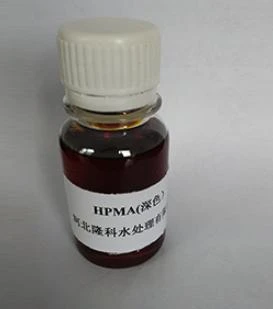 Scale Inhibitor Explained: How to Protect Your System from Limescale and Hard Water DamageIn water systems—from industrial boilers and cooling towers to household appliances—scale is a persistent enemy.read more
Scale Inhibitor Explained: How to Protect Your System from Limescale and Hard Water DamageIn water systems—from industrial boilers and cooling towers to household appliances—scale is a persistent enemy.read more -
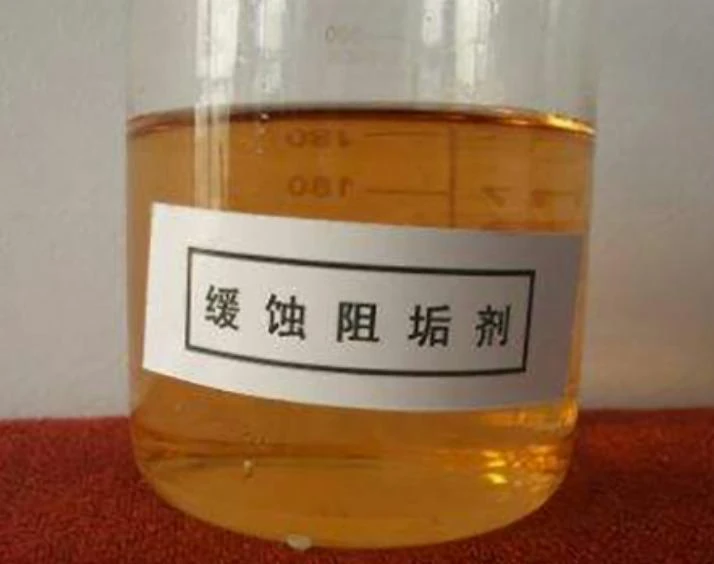 Scale and Corrosion Inhibitors: Essential Chemicals for Industrial Water System ProtectionIn industrial water systems—cooling towers, boilers, heat exchangers, pipelines, and RO systems—two silent threats can cause serious damage over time: scale formation and corrosion.read more
Scale and Corrosion Inhibitors: Essential Chemicals for Industrial Water System ProtectionIn industrial water systems—cooling towers, boilers, heat exchangers, pipelines, and RO systems—two silent threats can cause serious damage over time: scale formation and corrosion.read more -
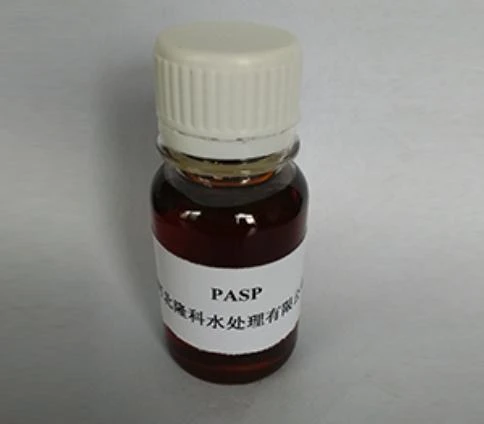 Polyaspartic Acid: A Biodegradable Polymer for Sustainable ChemistryAs industries move toward more sustainable materials, polyaspartic acid (PASP) is gaining traction across sectors—from water treatment and agriculture to coatings and biomedical applications.read more
Polyaspartic Acid: A Biodegradable Polymer for Sustainable ChemistryAs industries move toward more sustainable materials, polyaspartic acid (PASP) is gaining traction across sectors—from water treatment and agriculture to coatings and biomedical applications.read more







